A sad, and unfortunately common, sight this time of year is hosta plants looking like this:
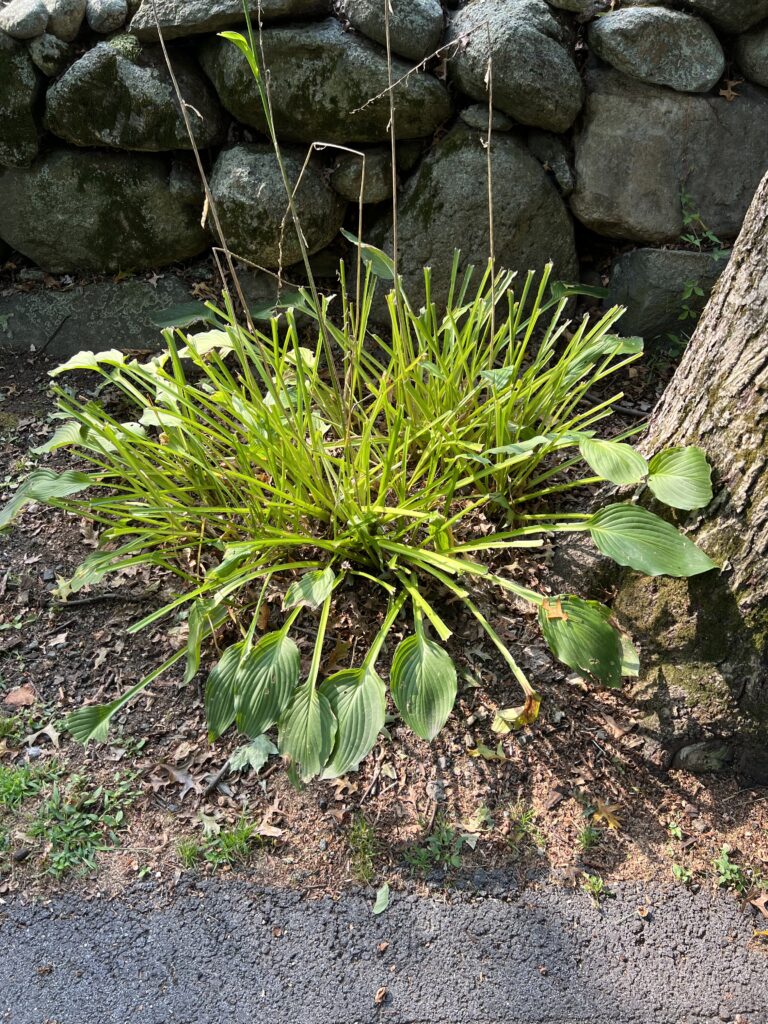
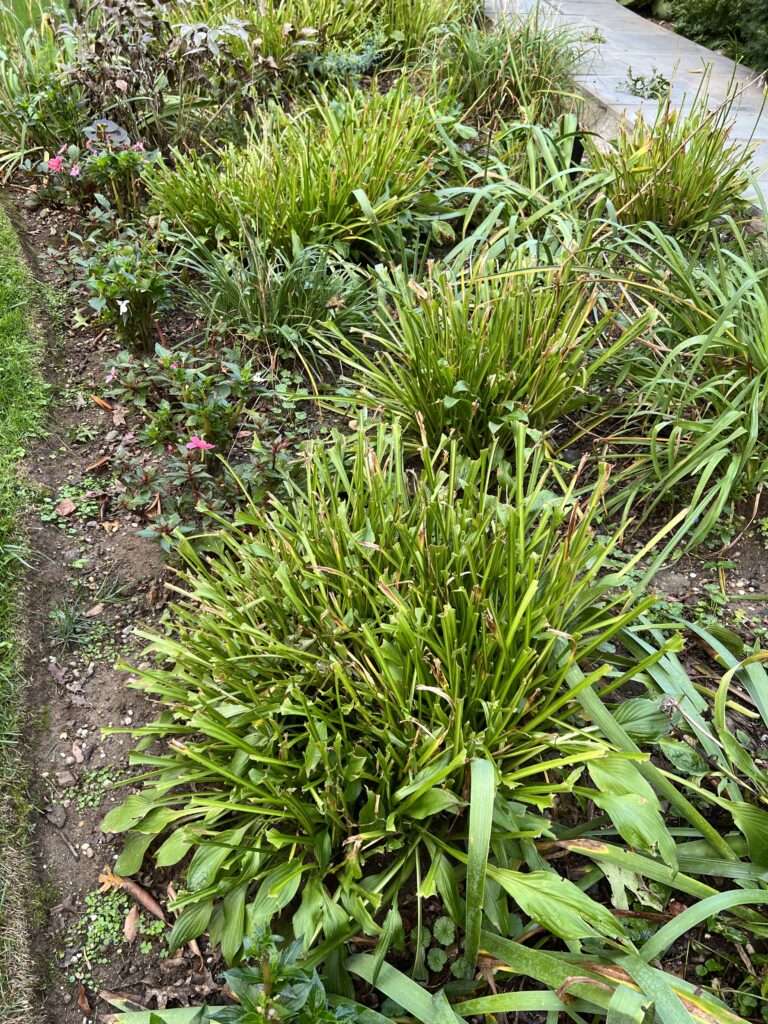
Hosta is apparently very popular with gardeners in our region, but it is equally popular with deer. By mid-summer, hosta plants are often chewed down to tattered stems. If you are frustrated that your hosta is just salad for the local deer population, perhaps it is time to consider a great alternative.
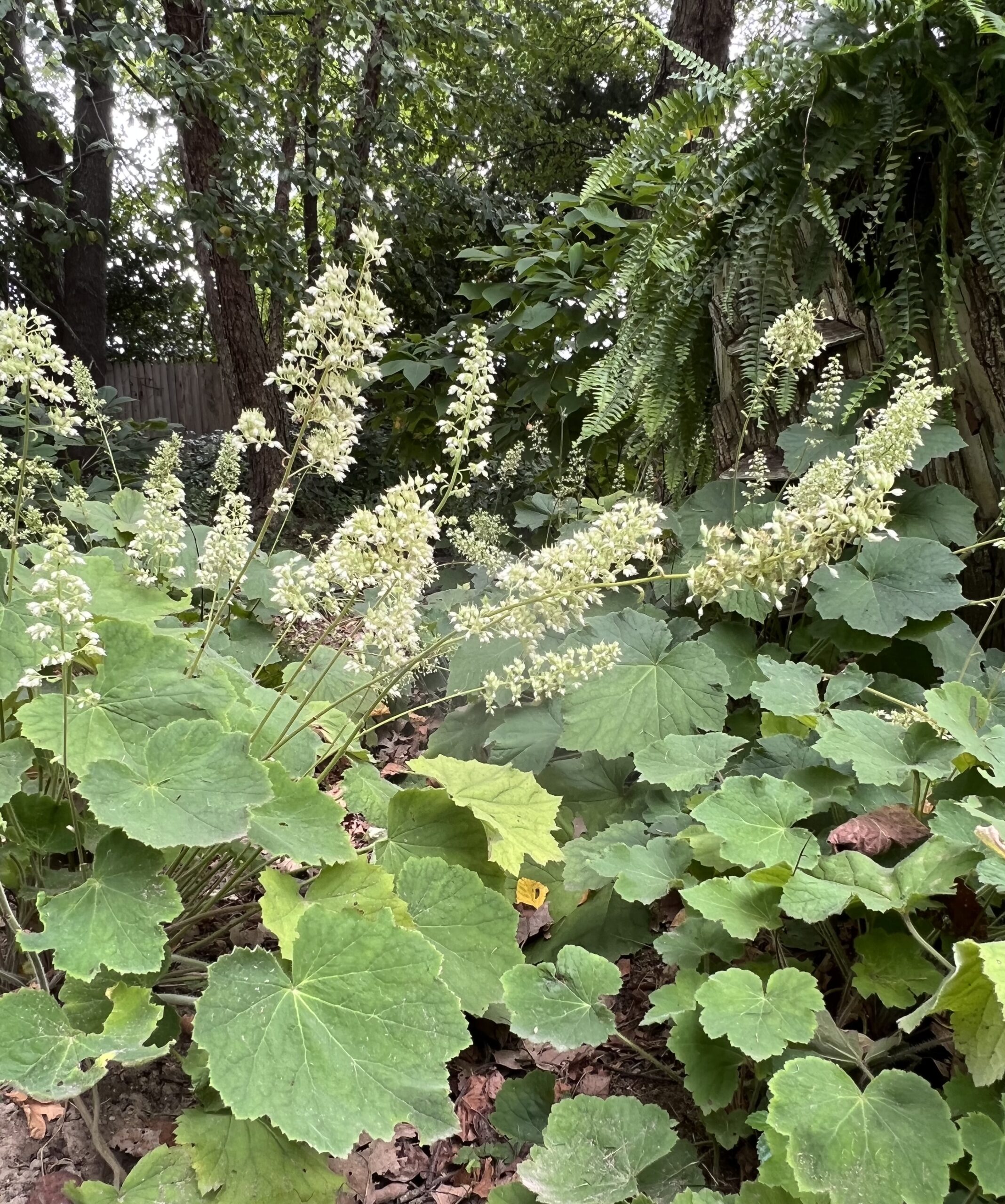
Heuchera villosa ‘Autumn Bride’ (common name Coral Bells or Alumroot) is a native plant about the same size and shape as most hostas, and it grows well in the same conditions. Part shade is fine, and it prefers soil with lots of organic matter, so it is happy under trees and shrubs, especially if fall leaves are left in place. Heuchera is surprisingly drought tolerant once established, so it is an option for dry shade. The leaves are soft and fuzzy and semi-evergreen. They don’t die back completely in the winter, but snow and ice will leave them a bit tattered by springtime. You can clip off any damaged areas before new growth appears. The leaves are far less susceptible to slugs and scorching than hosta leaves, so Heuchera looks better for much longer in the growing season than hosta does.
As the name suggests, ‘Autumn Bride’ blooms with big, white, showy flowers from late summer into fall. The flowers open over a period of weeks, with tiny buds on a stalk rising 6 to 10 inches above the leaves, opening to fluffy flowers loaded with nectar for bees stocking up for winter.

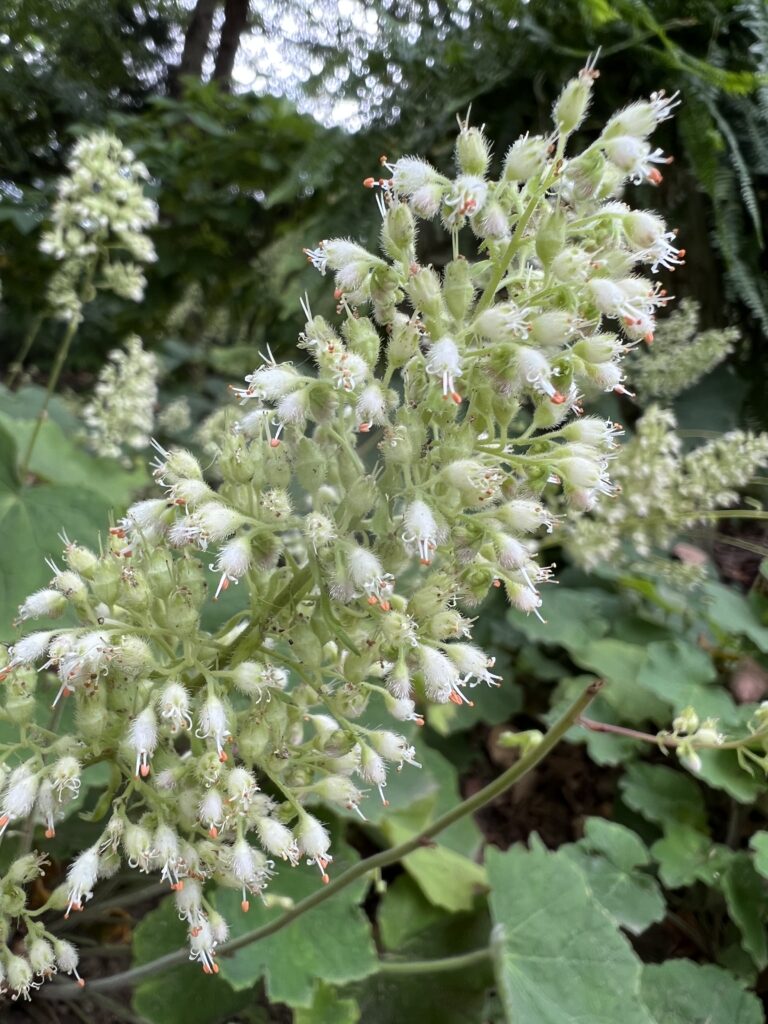
But the best thing about Heuchera is that deer apparently hate it!

The common name, “Alumroot,” refers to the plant’s very astringent quality, similar to the effect of the mineral, alum. Finely ground roots of the plant have been used for generations as an astringent to treat external wounds, including to stop bleeding, and for various internal ailments. The leaves are also astringent, and though deer will occasionally try a bite, they soon learn to avoid it.
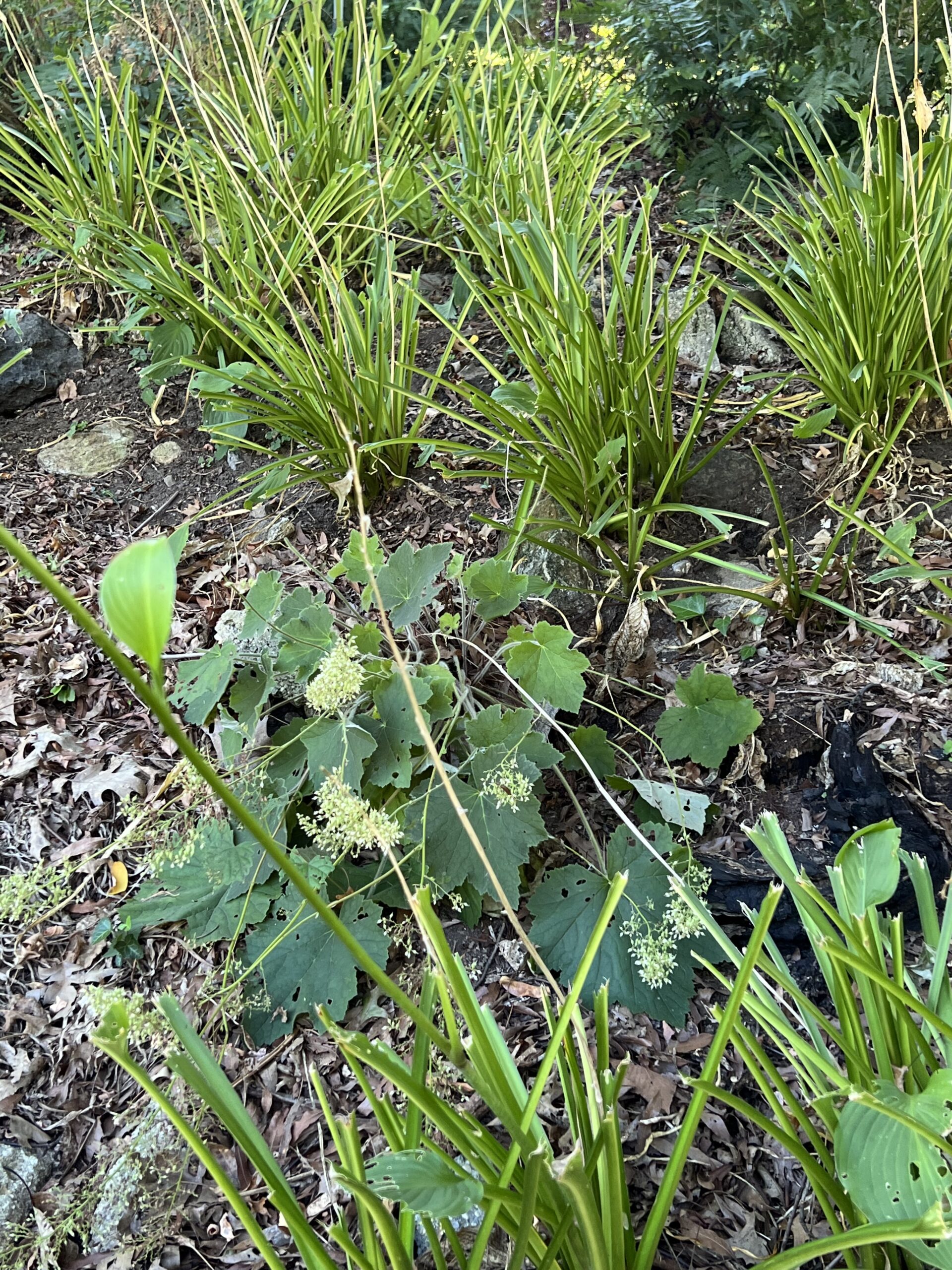
Heuchera is a genus of more than 50 species, all native to North America. ‘Autumn Bride’ is a selection of Heuchera villosa, which is native to the Eastern US, though the northern extent of the native range is subject to some dispute. Authorities differ on whether H. villosa and its cousin, Heuchera americana, were originally found as far north as New York, but both species do very well from Connecticut to the Carolinas and west to Arkansas and Oklahoma and are hardy in Zones 4-9.
Horticulture professionals have been busy developing hybrids of multiple species of Heuchera, crossing H. villosa and H. americana with species native to the American West, and inventing an array of multi-colored leaves and bright flowers. They also have crossed Heuchera with Tiarella, another native plant, further expanding the range of colors, leaf sizes, and flowers available in the trade. ‘Autumn Bride,’ at least initially, was a “selection” rather than a “cultivar” because it was propagated by seed from pollinated flowers rather than asexually by cuttings. While most nursery stock now is likely from asexual propagation, ‘Autumn Bride’ does reproduce consistently from seed, which offers some ecological advantage over hybrids or cultivars.

Combining the lovely white flowers of ‘Autumn Bride’ with other shade perennials is easy. It looks lovely with Pink Turtlehead (Chelone lyonnii ‘Hot Lips’), Christmas fern, Canadian Wild Ginger, or White Wood Aster (all deer resistant plants).
Heuchera villosa ‘Autumn Bride’ is a great garden plant. And it is a definite improvement over all of the non-native hosta we see sadly reduced to celery stalks by voracious deer.

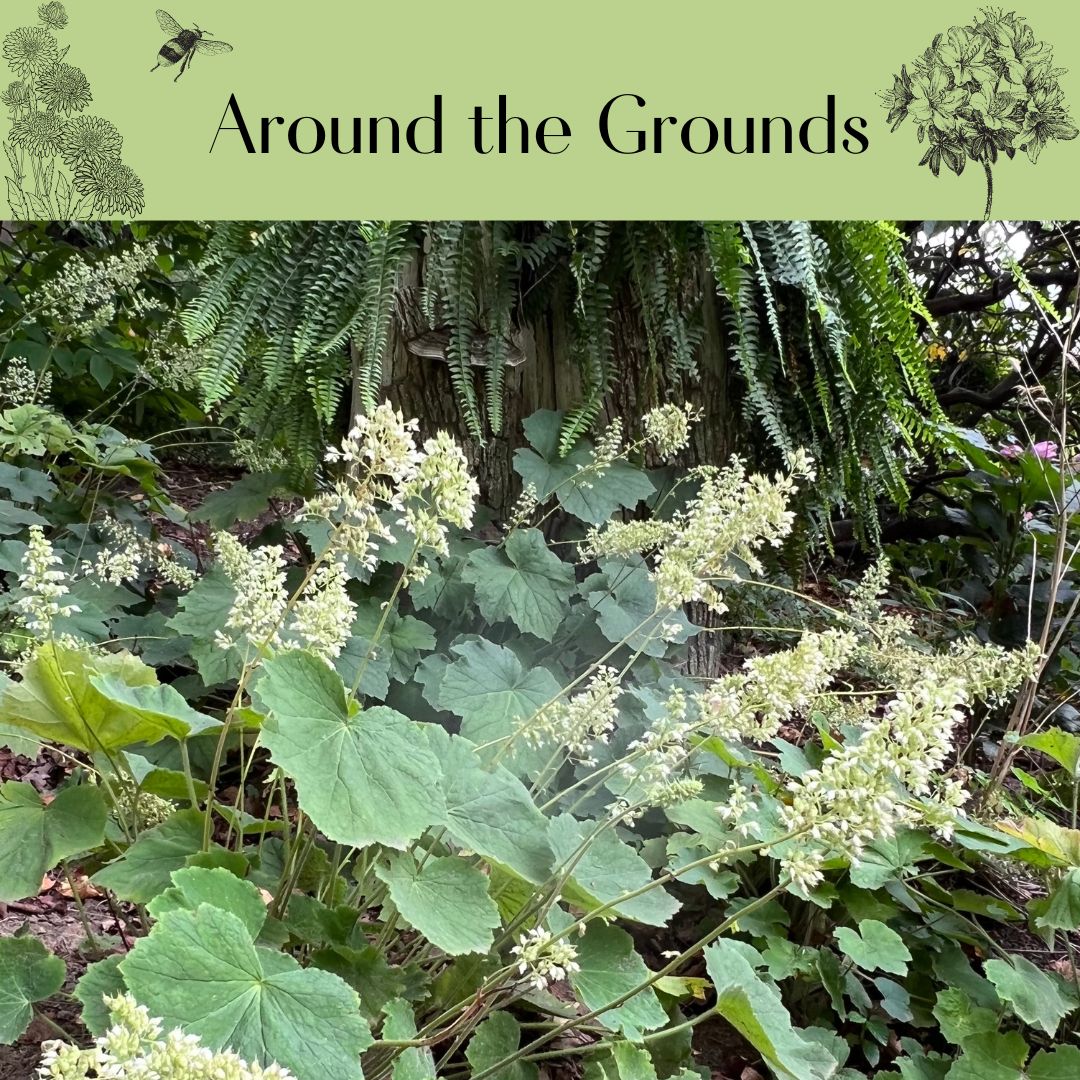
You’ll love it!
Heuchera villosa ‘Autumn Bride’ My new favorite plant. thanks Cathy.